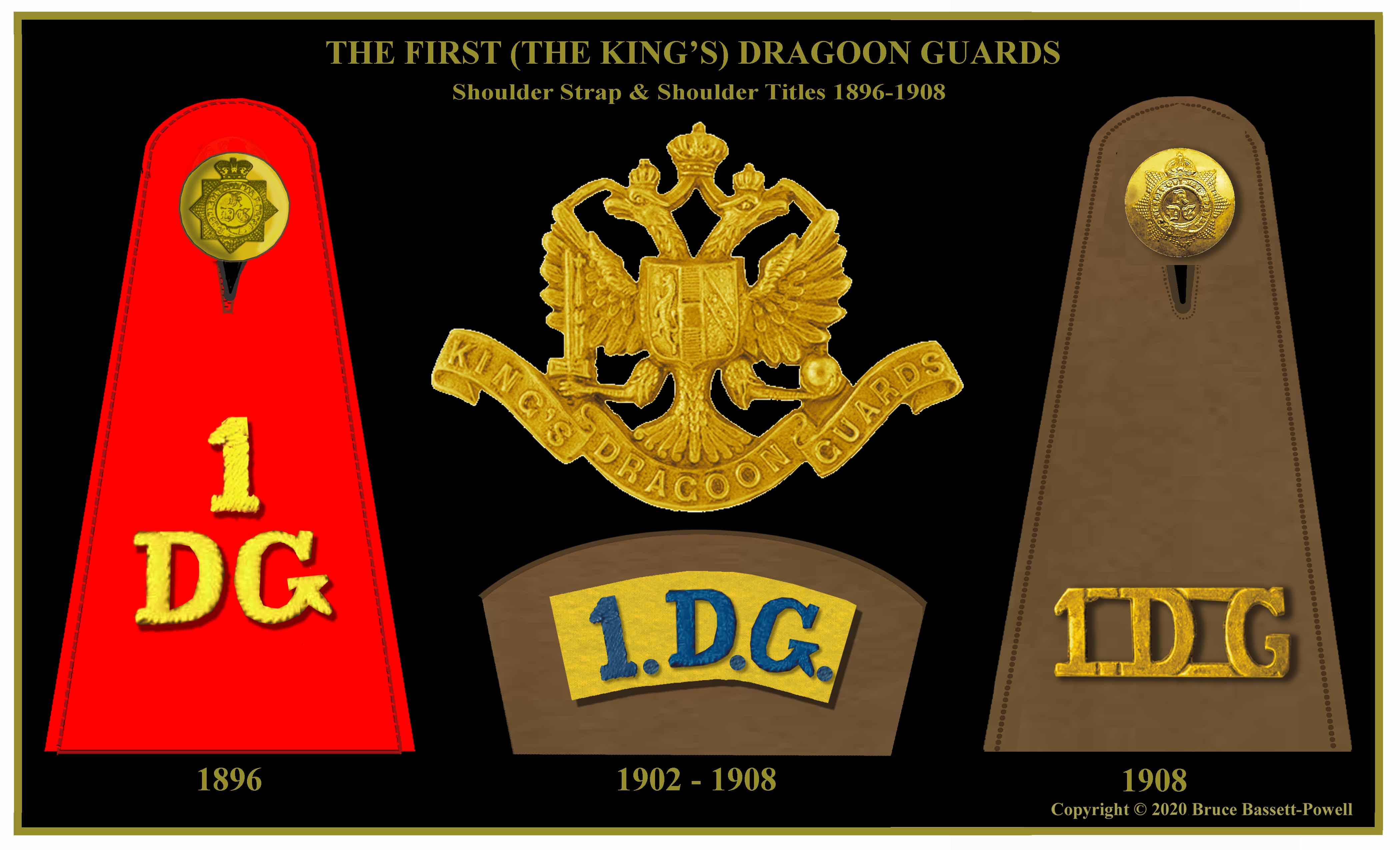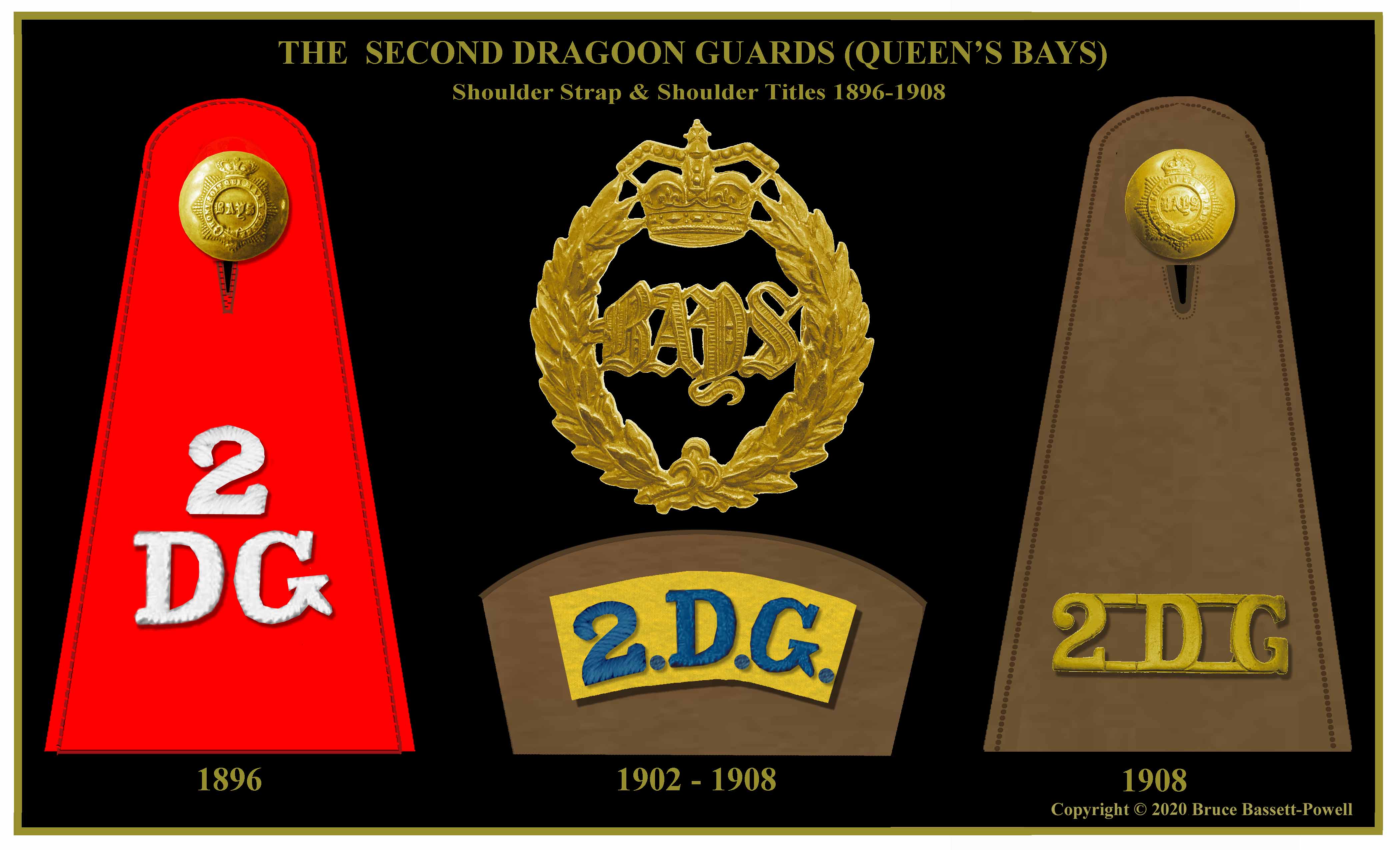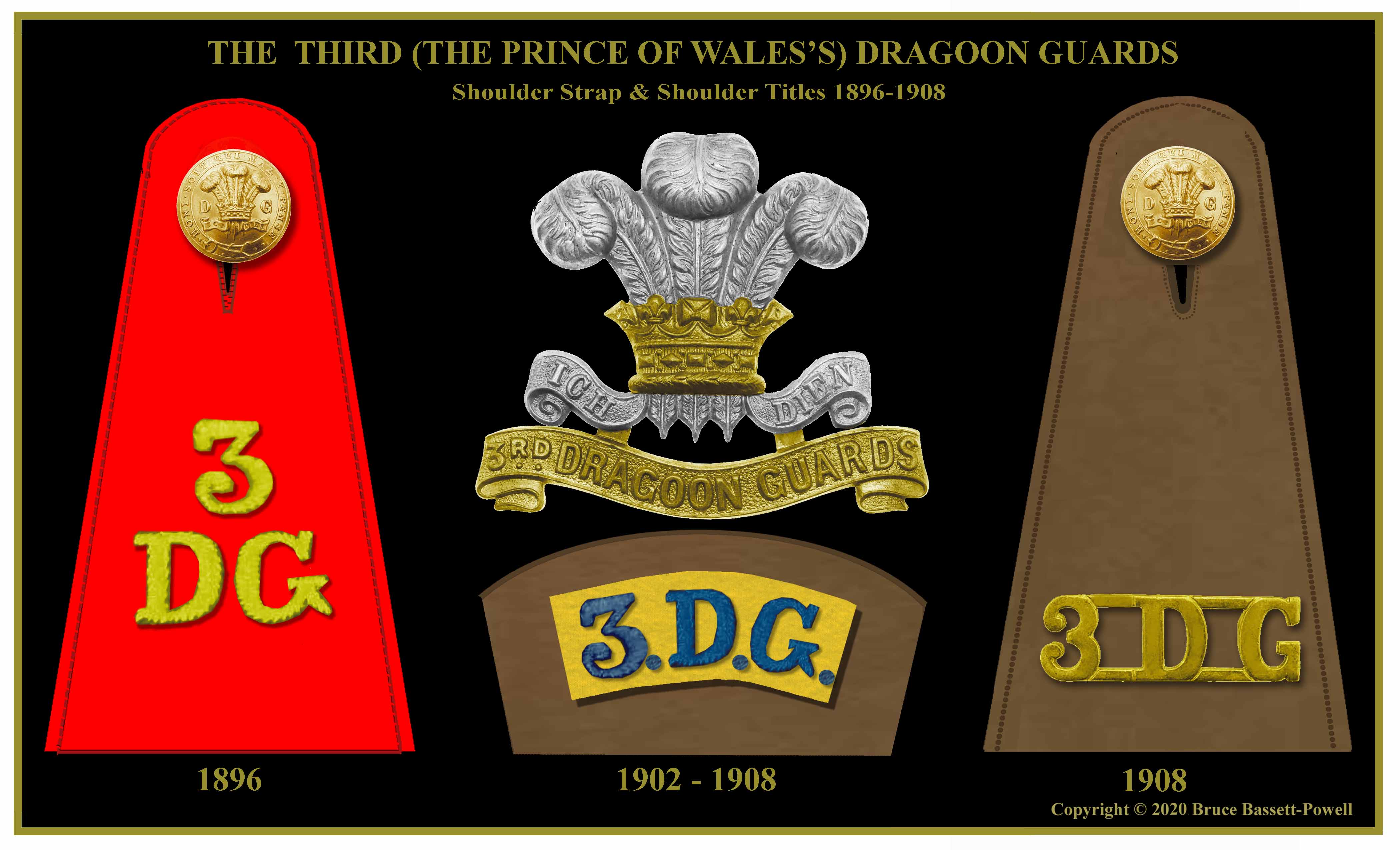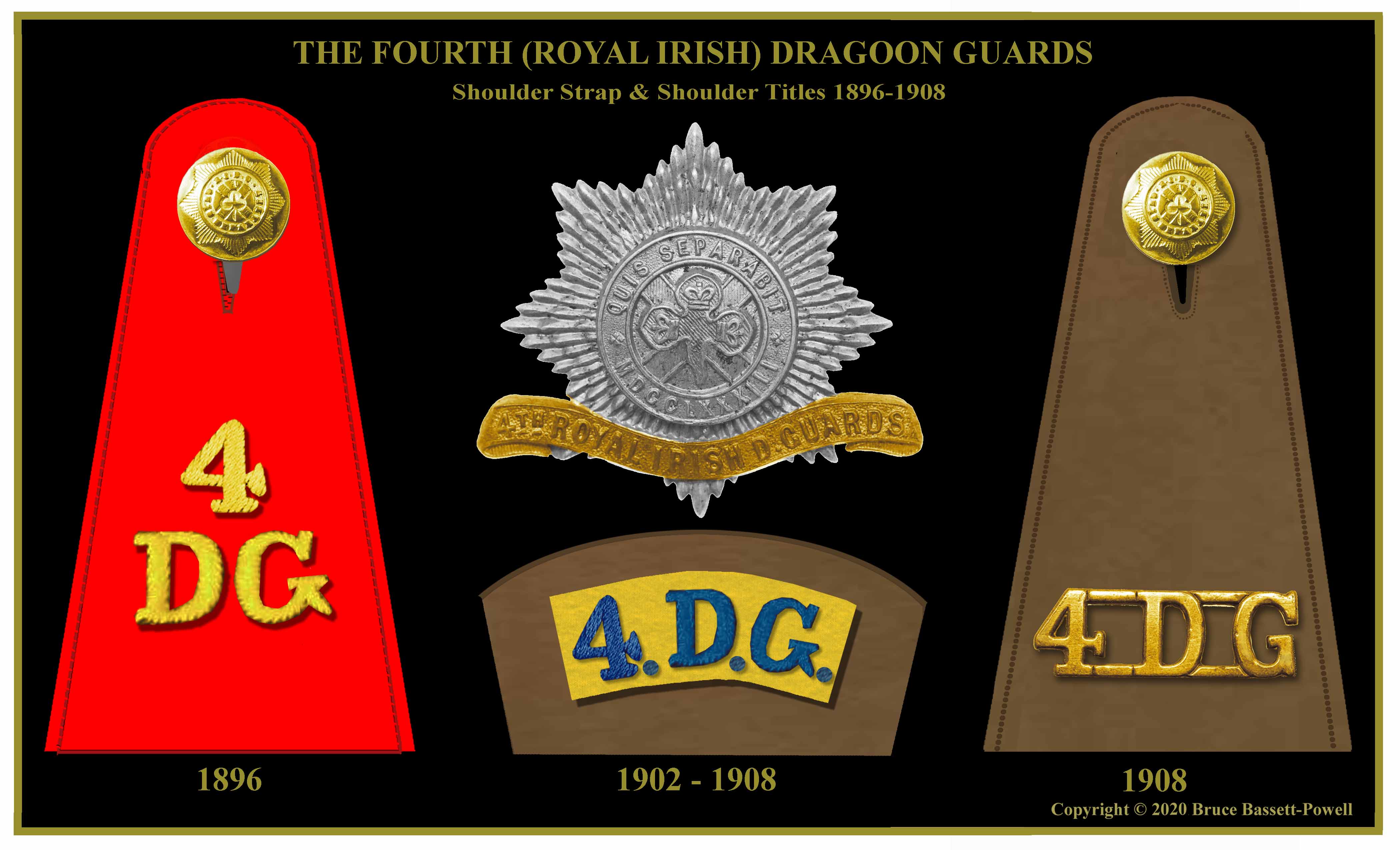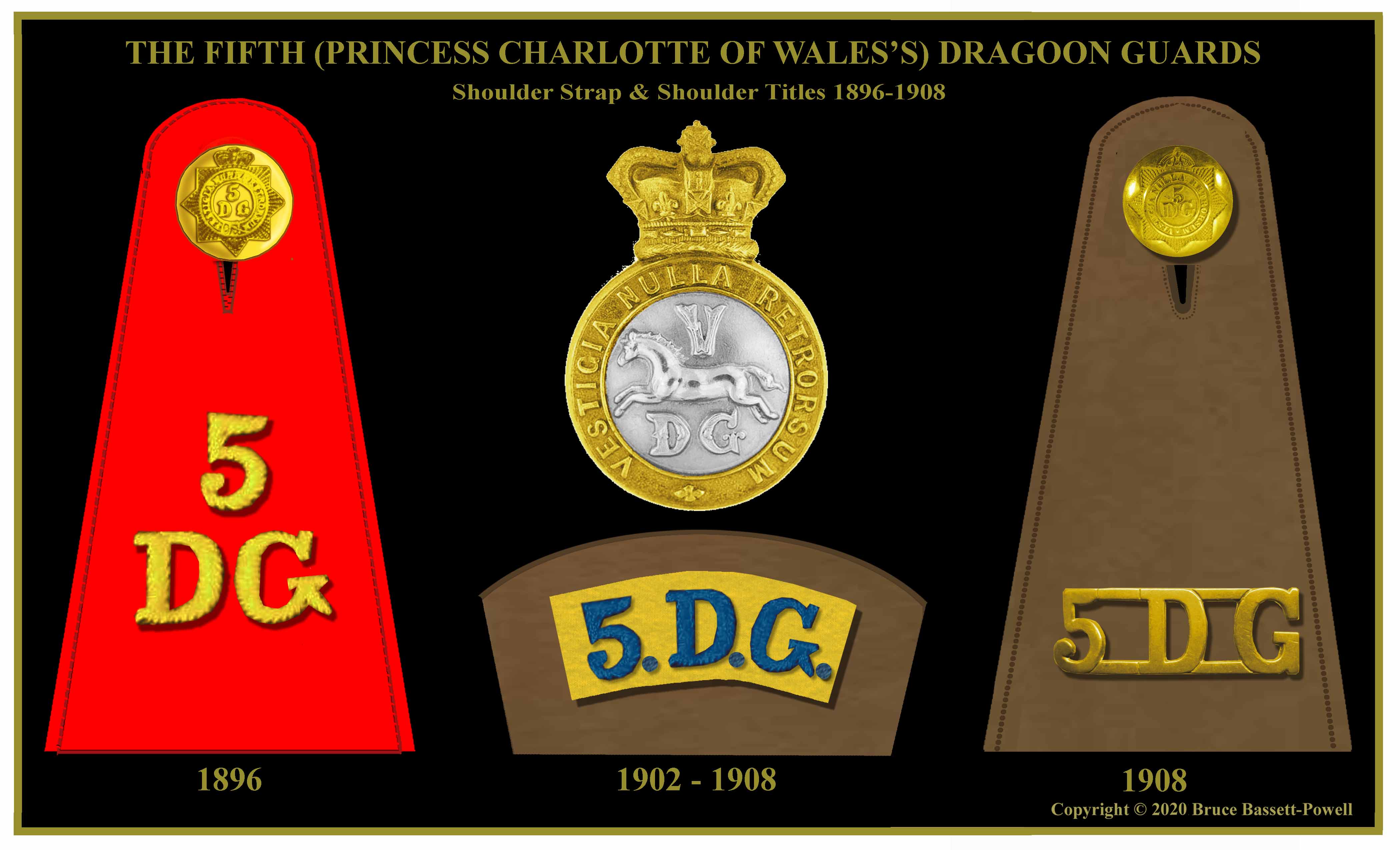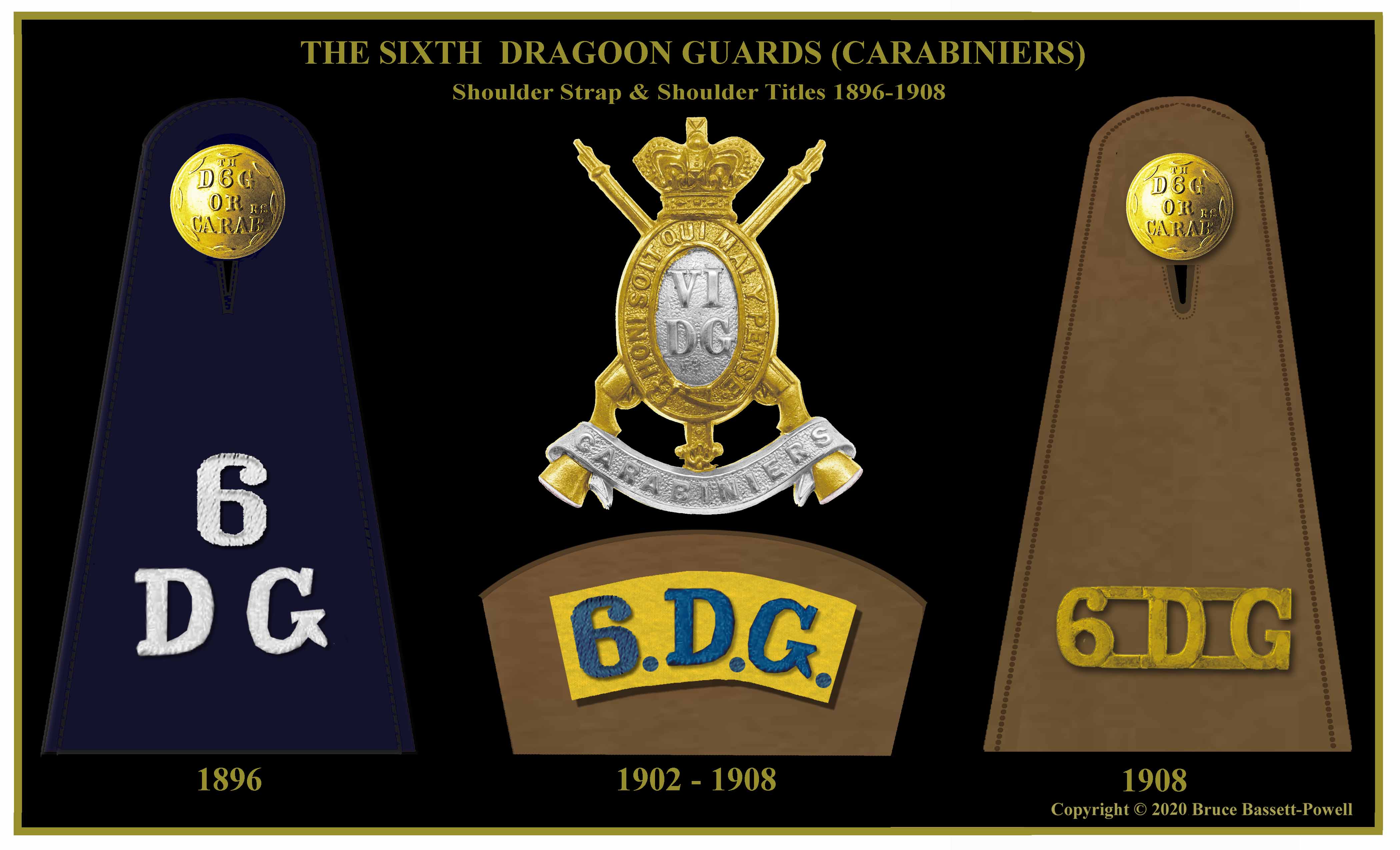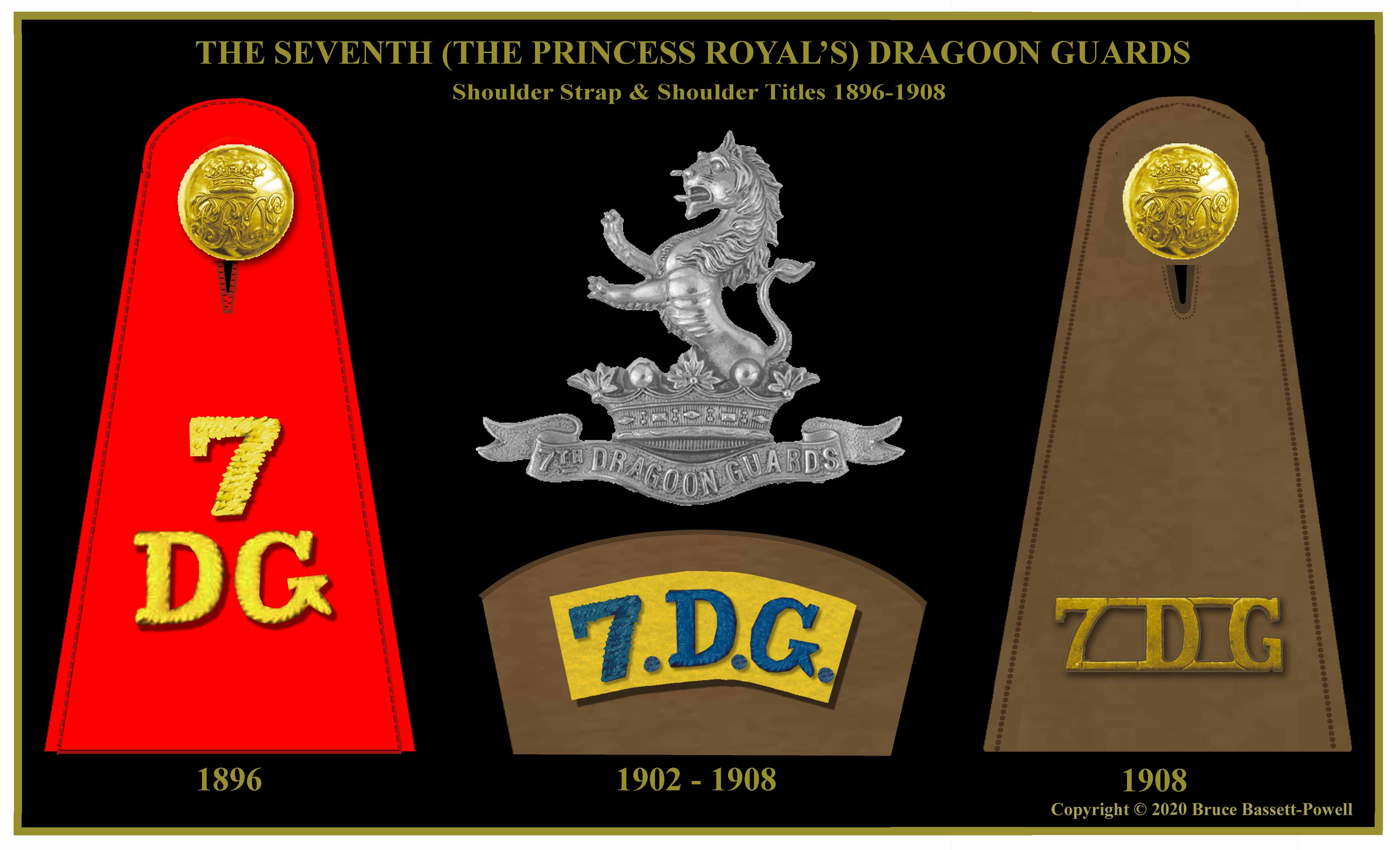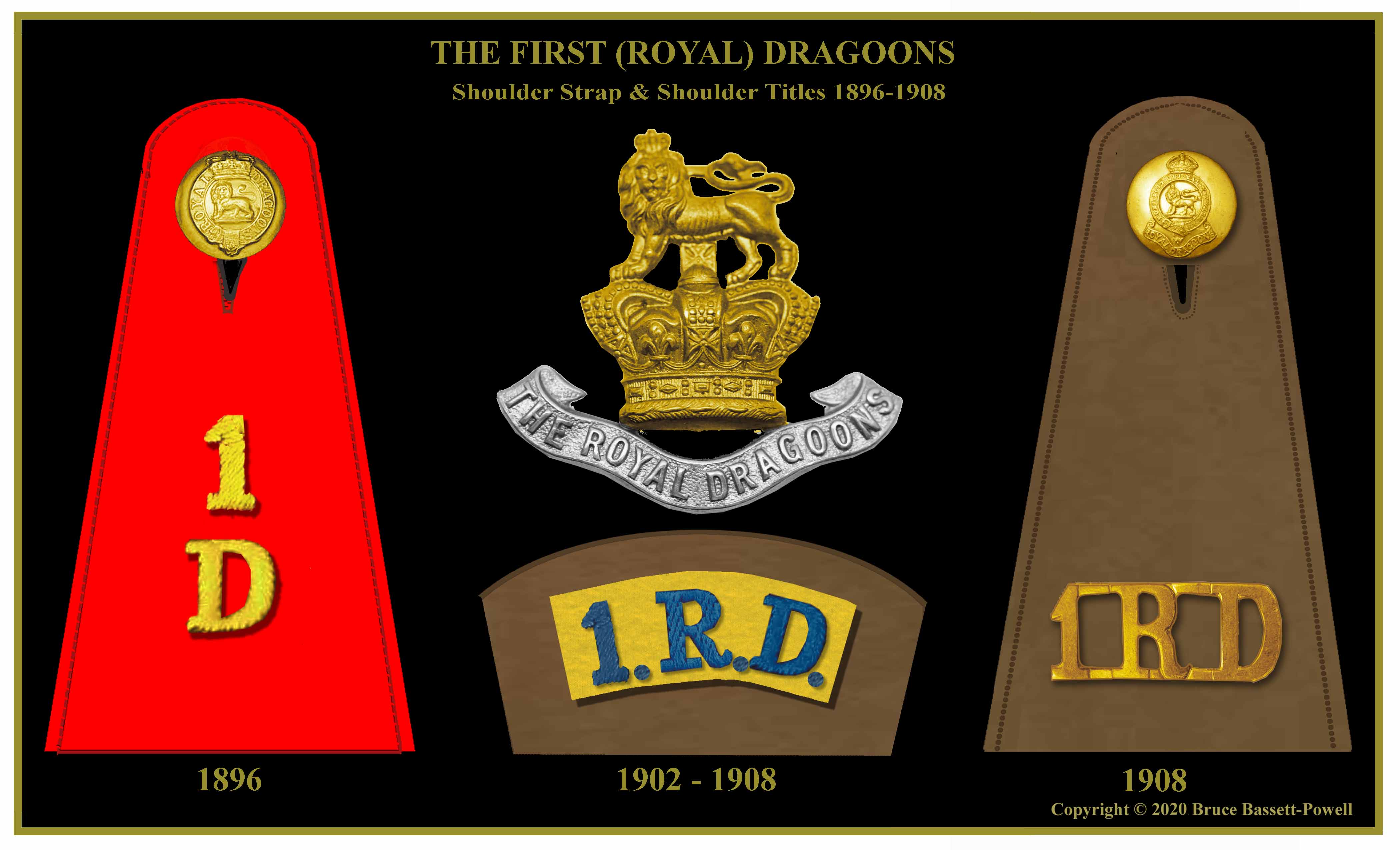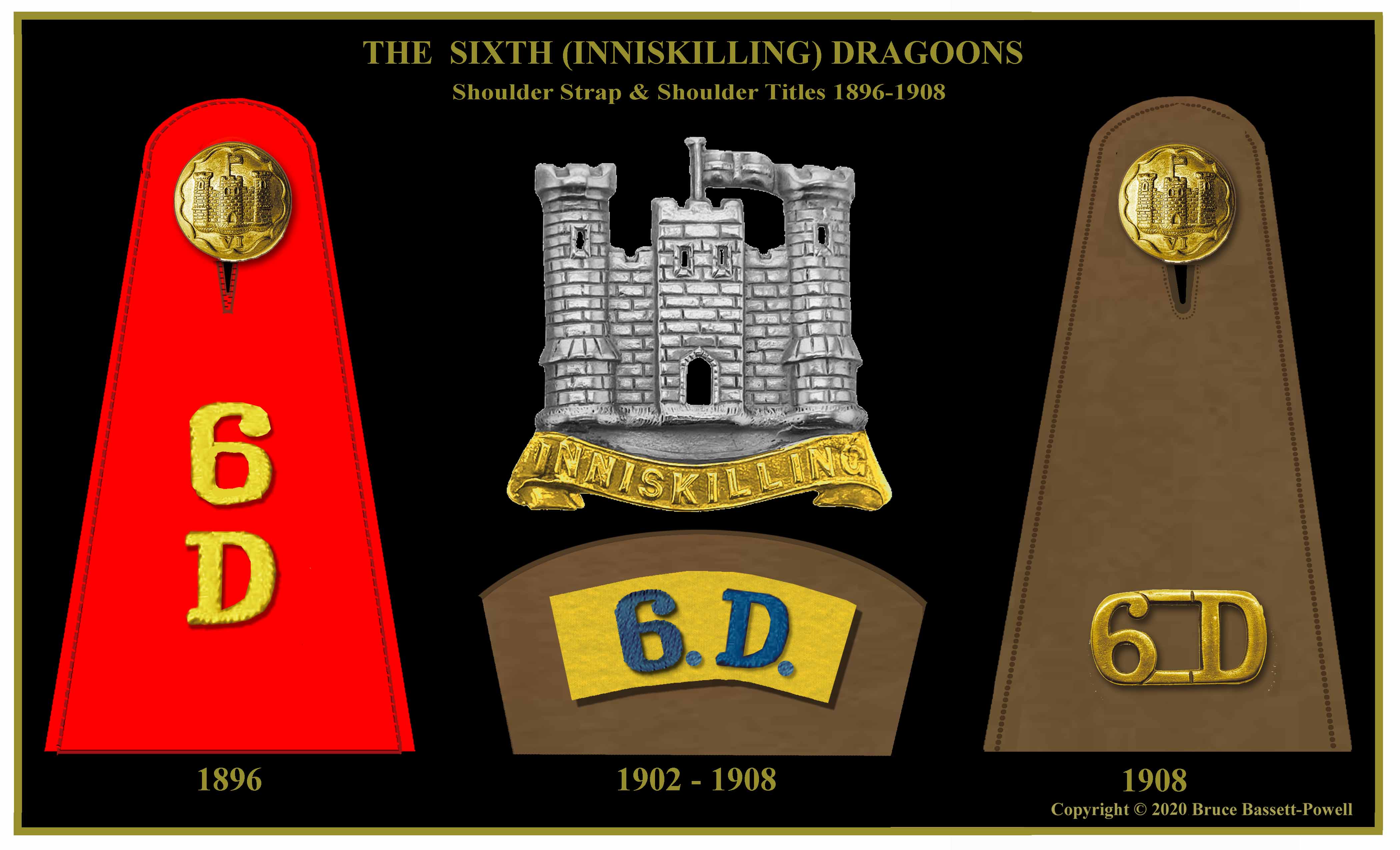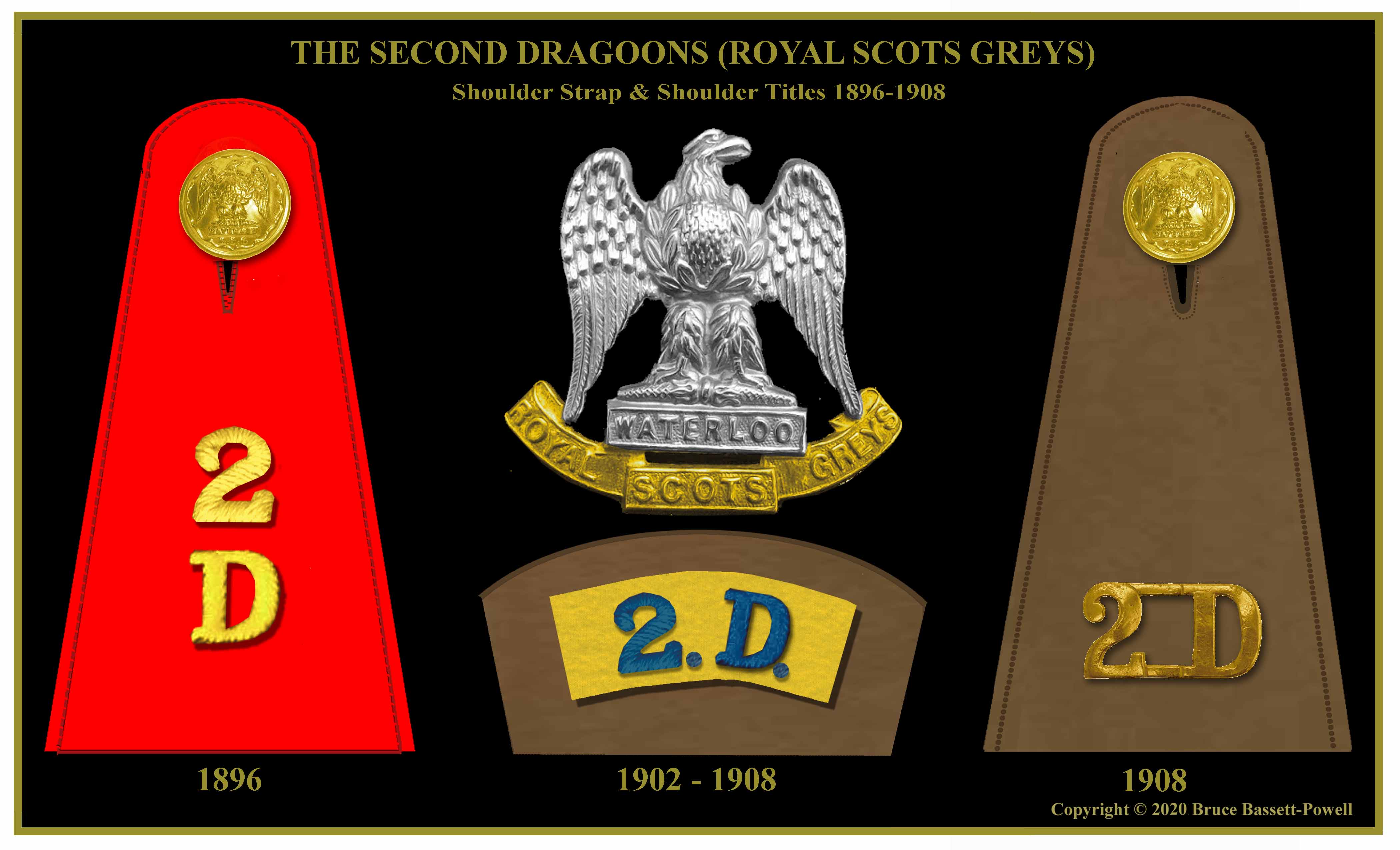CAVALRY
Cavalry of the Line
In general the regiments of British cavalry were less enthusiastic about adopting shoulder titles and collar badges when compared with their infantry counterparts. In part this was because unlike the infantry, who in the mid 1870s had to give up regimental waist belt clasps and buttons in order to fund new collar badges, the cavalry retained their discrete buttons. Also their dress distinctions relied upon much more impactful icons of identity, such as the colour of their plumes and facings in the case of Dragoons and Dragoon Guards, and plumes and busby bags, or plastrons (1) , in the case of the Hussars and Lancers. These latter distinctions were comparatively bold, almost tribal like markers that distinguished the various groupings within the heavy and light cavalry even from a distance. It was only when obliged to dress in homogeneous khaki uniforms (2) during campaigns in India, the latter stages of the Sudan War, and the 2nd Anglo/Boer War, that brass shoulder titles began to evolve in the cavalry universally, although woven titles had been worn by the heavy cavalry with full dress ever since tunics replaced coatees.
Through the influence of Silladar cavalry in the Indian service going back to the Indian Mutiny, sections of the chain mail worn by Indian and Persian cavalry since medieval times, began to be fitted to the shoulders of cavalry field dress in both British-Indian and British-Imperial regiments. This evolved from being a practical measure to protect shoulders from the downwards slash of native swords, to being an idiosyncratic form of dress that at a glance identified a cavalry soldier, and by the 1890s brass shoulder titles were added as an additional form of decoration and identity. As with the foregoing parts of this series, this section will only focus upon the periods 1896, 1902 and 1907.
In the case of Dragoons and Dragoon Guards, in 1896 simple woven worsted titles were worn on both, full dress and frock shoulder straps. For full dress tunics golden yellow thread was adopted on blue and green facings, and red thread on white and yellow facings, whereas for undress frocks a more utilitarian arrangement utilising contrasting thread was used. Hussars and Lancers did not wear shoulder straps of any kind on their full dress attilas (4) and tunics, but instead adopted twisted shoulder cords on their undress frocks, primarily formed from twin yellow strands, but in some regiments in other colours, or even contrasting colours.
In 1902 and the introduction of drab (brownish khaki) serge service dress, Army Order No10 decreed that all cavalry regiments of the line were to wear new 'designations' (titles) on the upper arm in blue thread on a pale shade of yellow. Similar titles in other arm-of-service colours were worn throughout the Army and these are covered in the other sections of this series. However, the take up was mixed, with units based on the Home Establishment, including personnel at regimental depots, adopting the new badges according to scale, whereas units on Foreign Establishments such as India, South Africa and outstations across the Empire never saw an issue of these badges at all. Nonetheless, there was a laid down pattern for all regiments and corps, and depot and headquarters staff ensured that all badges saw the light of day, even if in small numbers.
By 1908 circumstances had changed and a spike in the price of wool together with the plunging costs of base metals led to the cloth titles being replaced by gilding metal titles (a mixture of brass and zinc) to be positioned, once again, on the shoulder strap universally, and the wearing of unit titles had come full circle. However, the design imposed was very standardised and utilitarian, with little allowance for regimental idiosyncrasy beyond a number. This did not sit well in a regimental system that thrived on individuality and, over the succeeding decades, various modifications such as the adoption of Roman numerals, and sometimes the addition of a regimental symbol, led to a much greater variance between units that was also seen on undress frocks. Thus the 1907 titles marked a very short lived period of standardised design, which the authors of this series feel is worthy of recognition and explanation, as by 1924 very few of them had survived unchanged.
-------------------------------------------------------------
(1) Reversible front section of a lancer tunic that showed the facing colour on one side and the base colour on the other.
(2) In stout cotton drill in hot weather and serge wool in cold weather.
(3) A man who placed himself, his own horse and his personal arms at the service of a commander for pay or booty.
(4) The pattern of corded or frogged tunic worn by Hussars and originating in Hungary.
Double click here to add text.
NEXT:
THE HUSSAR REGIMENTS



